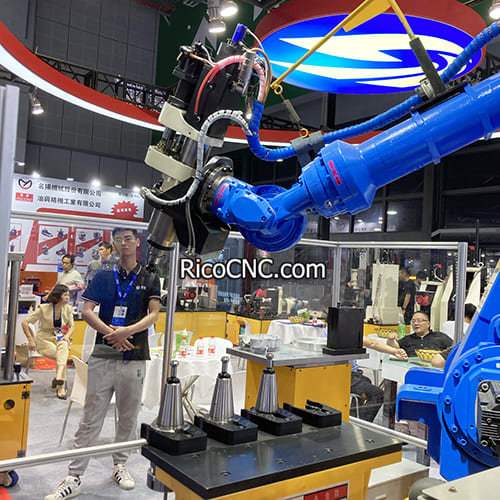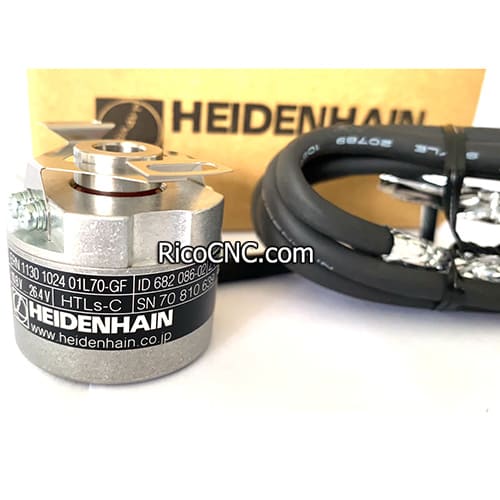
Why Use Encoder in Servo Motor?
Servo motors are a pivotal part of modern automation systems, from precise industrial machinery to the simplest of robotic arms. But what truly allows these motors to operate with such precision? The answer lies in encoders. In this article, we'll explore why encoders are essential in servo motors, their types, and the various roles they play in control systems. By the end of this guide, you'll have a comprehensive understanding of how encoders contribute to the optimized functioning of servo motors and the benefits of their integration.
1. What is an Encoder?
An encoder is a device used to convert mechanical motion into electrical signals. Specifically, in servo motors, it serves as a feedback mechanism, informing the control system of the shaft position, speed, and direction. The encoder thus translates the rotary or linear movement of the motor into signals that can be interpreted by the control unit. This information is vital for regulating and controlling motor functions effectively.
There are primarily two types of encoders in use today:
Absolute Encoder: Keeps track of the angular displacement of the shaft, even if there is a power interruption. It's especially useful when the position must be known at all times.
Incremental Encoder: Provides feedback in relative terms by counting movements from a specific point, often used where repeatability is more crucial than absolute position.
These encoder types help in accurately gauging motor performance, whether the motor is used for precision cutting, robotics, or automated production lines.
2. Understanding Servo Motors

Servo motors are specialized motors equipped with feedback systems to control angular or linear positioning, speed, and acceleration. The encoder is central to how servo motors operate. By receiving precise position feedback, the motor can make adjustments to its output. This loop of data exchange is called a closed-loop control system, and it significantly enhances motor performance.
Key Benefits of Encoders in Servo Motors
Precise Position Control: Encoders provide a way to control the exact position of the motor shaft. This is particularly useful for applications requiring angular precision, such as robotic arms.
Speed Regulation: The data provided by the encoder helps in maintaining and adjusting speed, especially during load changes. This ensures smooth and controlled motor movement.
Error Correction: The feedback loop enabled by encoders allows real-time error detection and correction, leading to fewer operational discrepancies.
System Stability: Having precise control over the motor's position and speed significantly contributes to system stability, even when unpredictable conditions occur.
Servo motors without encoders are generally classified as open-loop systems, such as stepper motors. While stepper motors have their benefits, such as simplicity, they often lack the precision and real-time feedback that servo systems with encoders offer.
3. Types of Encoders in Servo Motors
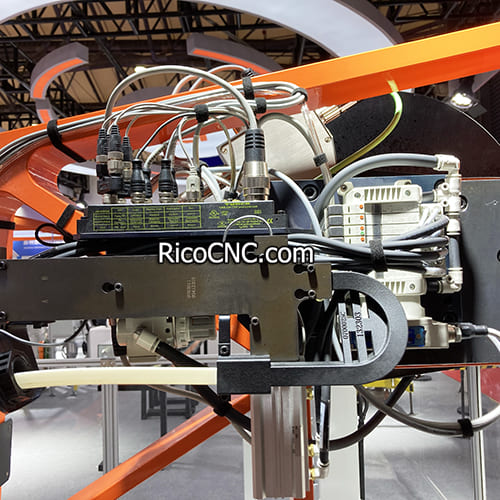
The choice of an encoder depends on the type of servo application. Here are the most commonly used encoders in servo systems:
Absolute Encoders
Absolute encoders provide unique digital codes for each shaft position, meaning that the position is always known, even after a power outage. This feature is crucial in applications that need exact positioning, regardless of interruptions. Absolute encoders can be further categorized into:
Single-Turn Encoders: Track movement over a single rotation. Ideal for applications where the shaft's rotation is restricted to 360 degrees.
Multi-Turn Encoders: Measure multiple rotations, suitable for complex machinery like industrial robots that have multiple moving axes.
The benefits of absolute encoders are their ability to return precise positions and immediate recovery post power failure. For instance, during an emergency stop, an absolute encoder can recall the exact position of the shaft for an easy restart.
Incremental Encoders
Incremental encoders provide pulses in response to the shaft's movement. They are simpler and less expensive compared to absolute encoders. They can be classified into:
Quadrature Encoders: They provide A/B channels for determining the direction and speed, adding more flexibility in movement detection.
Tachometer Encoders: Mainly used for speed control by generating a signal proportional to the rotational speed.
These encoders are ideal for cost-effective applications where absolute precision is less critical, and relative displacement is sufficient.
4. Why Use Encoders in Servo Motors?
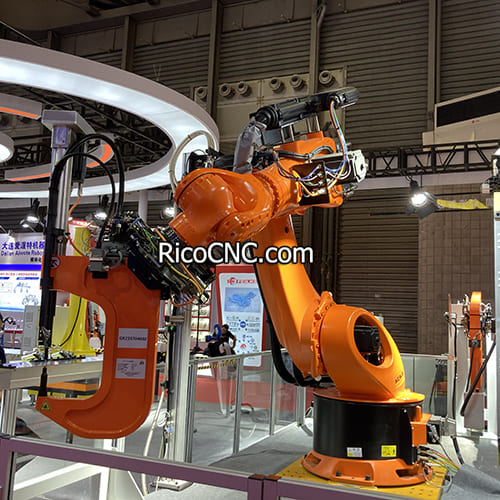
The use of encoders in servo motors serves multiple crucial purposes. Here, we'll delve into the primary reasons behind this essential integration:
Feedback for Precision Control
Without encoders, servo motors would lose their ability to self-adjust. Feedback ensures that every action of the motor shaft matches the intended command. Imagine a robotic welding arm moving to weld at an exact position—without a reliable feedback mechanism, achieving the same position each time would be impossible.
For example, in the R88D-GT15H-Z Omron Servo Drive, the built-in encoder ensures the speed and position remain optimal, which is a significant contributor to automated efficiency and repeatable quality. If you want to explore more about these systems, you can visit Omron Servo Drive.
Maintaining Control in Dynamic Conditions
In automation systems, changes in load are common. An encoder helps the motor compensate for these changes, ensuring steady operation despite external factors. By giving real-time feedback, the encoder can help dynamically adjust voltage and current inputs, leading to balanced performance.
Servo motors used in automated conveyor belts, for instance, benefit from encoders as they need to maintain speed regardless of fluctuations in load. This capability not only increases productivity but also lowers wear on mechanical components.
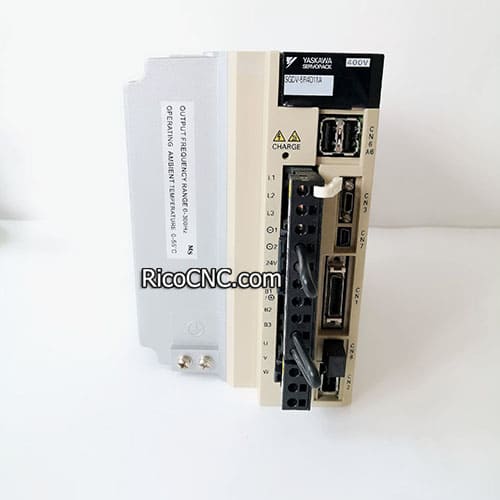
Image: SGDV-5R4D11A Yaskawa Servo Driver SGDV-5R4D11A Yaskawa Servo Driver
Synchronization in Multi-Motor Systems
In scenarios where multiple motors need to be in sync—like a packaging machine—encoders help provide critical timing and position data to ensure seamless operations. Encoders can maintain precise alignment between rotary axes, which is crucial for maintaining product quality and avoiding wastage.
5. Absolute vs. Incremental Encoders: Choosing the Right Type
When selecting the type of encoder for a servo motor, the key consideration depends on the application requirements:
Absolute Encoders: Suitable for applications requiring knowledge of the precise shaft position at any given time. They ensure that the position data is retained even after a power loss, making them ideal for complex systems.
Incremental Encoders: More suited for simpler applications where relative changes are tracked rather than an absolute position. They are cost-effective and simpler to integrate.
A typical servo drive, like the MKDET1505P Panasonic AC Servo Driver, integrates incremental encoders to manage speed and position feedback efficiently, particularly in cost-sensitive applications. More details can be found at Panasonic AC Servo Driver.
6. Applications of Servo Motors with Encoders

Robotic Arms and Automation
Robotic systems heavily rely on encoder feedback for achieving precise positioning. An encoder assists the control system by providing accurate data about the motor’s shaft position. This way, robots can repeat their tasks with high levels of precision, contributing to consistent product quality.
CNC Machines
For Computer Numerical Control (CNC) applications, having precise control of the motor position is paramount. The encoder provides the exact location of the rotary shaft, which allows the machine to make intricate cuts and shapes with great accuracy.
Conveyors and Handling Systems
The speed regulation and position control offered by encoders are also important in conveyor systems. They ensure items are moved at the correct speed, synchronized with other parts of the production line, enhancing the overall efficiency.
FAQs
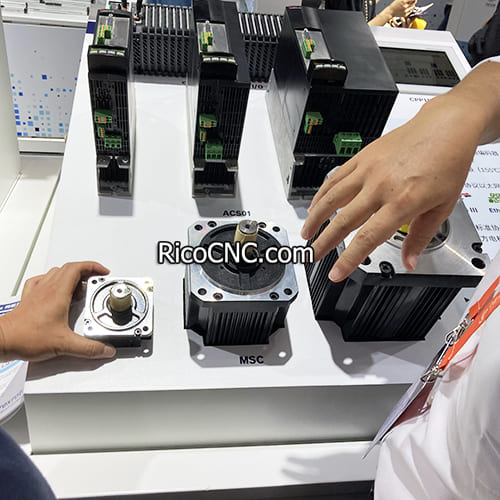
Why are encoders used in servo motors?
Encoders are used in servo motors for position control, speed regulation, and error correction in dynamic environments.
What is the difference between absolute and incremental encoders?
Absolute encoders give a unique position value for each point on the shaft, whereas incremental encoders measure movement in terms of pulses, relative to a starting position.
How do servo motors maintain precision?
Servo motors maintain precision through a feedback mechanism involving encoders, which provide data about the motor's position and speed.
When should I use an absolute encoder instead of an incremental encoder?
An absolute encoder should be used when continuous positional data is crucial, such as in safety-critical systems or applications with frequent power interruptions.
Conclusion
Servo motors, when paired with encoders, become powerful tools in automation, offering precision, efficiency, and flexibility. From managing position and speed to offering error correction in real-time, encoders ensure that servo motors operate with remarkable accuracy. This synergy between the motor and encoder makes them indispensable in various industrial applications, including robotics, CNC machines, and conveyor systems.
If you are interested in finding more about servo drives and encoders, you can visit our detailed catalog on qingonggroup.com to learn about our extensive range of products that suit various industrial needs. The integration of the right encoder with the right motor can significantly enhance your automation system’s performance, and we're here to assist you in making that choice








